- Transmission of data by some physical means.
- Physics. Describe and predict the behavior of a signal crossing some physical medium.
- Mathematics. How to best represent the data using measurable physical quantities.
- Engineering. Effectively realize the the schemes, i.e., make it actually work, and at an affordable cost.
- Several steps may be involved.
- Information sources may be digital or analog. In the later case, source encoding must include some sort digital conversion.
- Encryption is used to secure against snooping, and can be omitted if that is not an issue.
- Chanel encoding usually includes some method for the decoder to detect errors.
- Multiplexing refers to the sending of multiple signals sharing a single channel.
- Not all steps are needed in every case (or some may be trivial).
- Signals
- Measurable energy.
- Analog and digital.

- Periodic or aperiodic.
- Sine waves
- A very important kind of periodic signal described by the
sine function.
- Amplitude: The height of curve maximum.
- Frequency: The number of cycles per second.
- Phase: The delay of the start of the first complete cycle from some reference time.
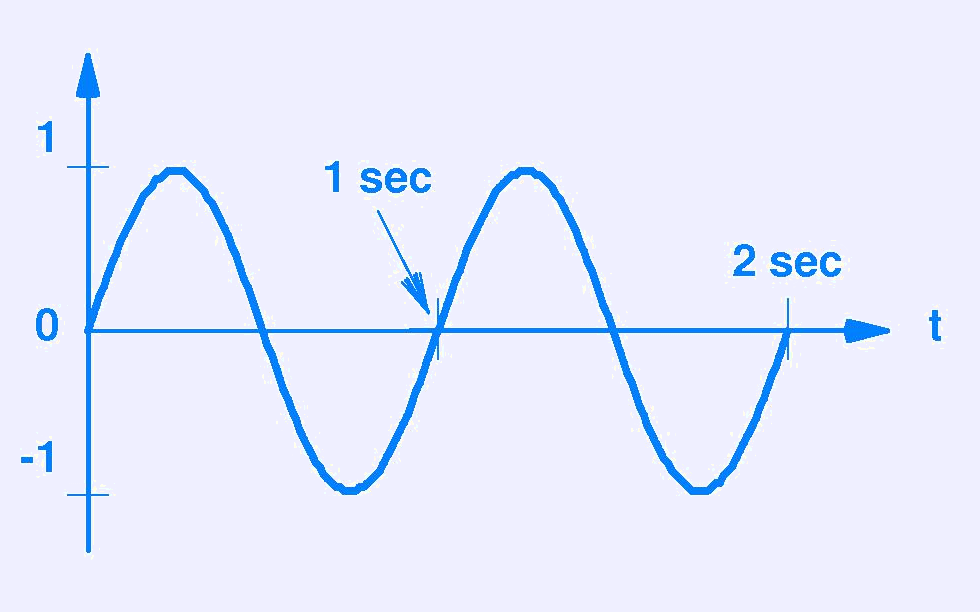 sin(2πt)
sin(2πt)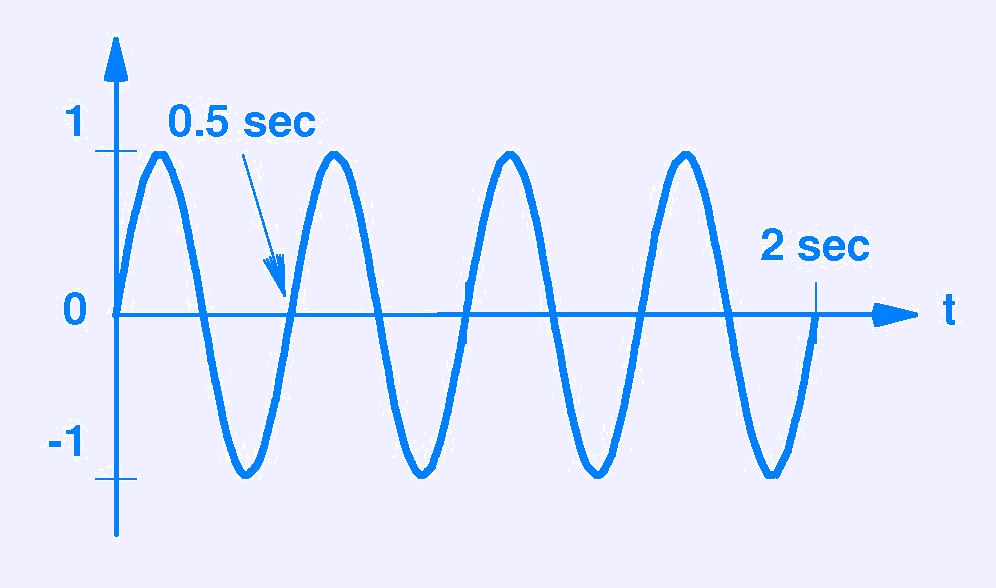 Higher frequency: sin(2π2t)
Higher frequency: sin(2π2t)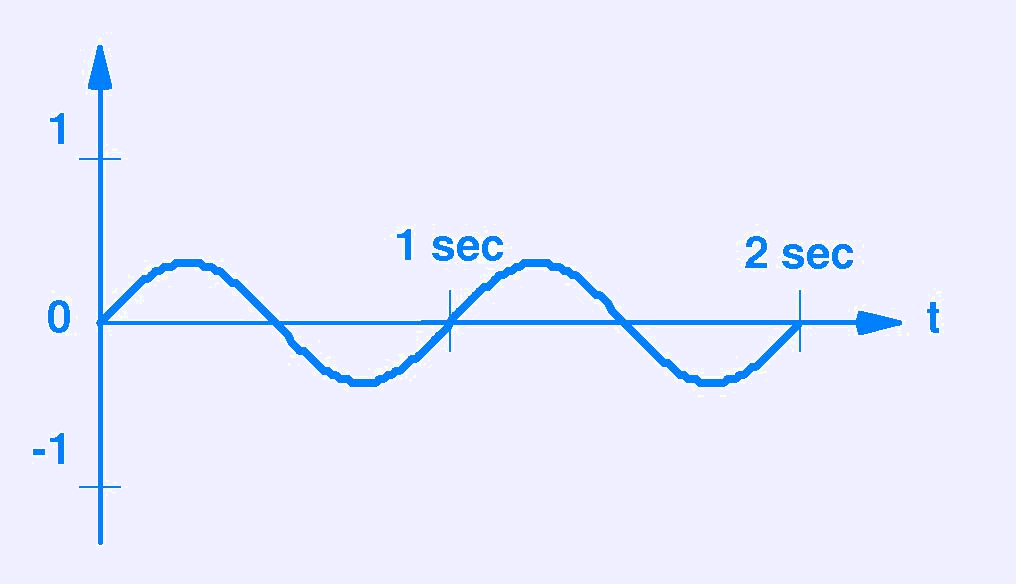 Lower amplitude: 0.4sin(2πt)
Lower amplitude: 0.4sin(2πt)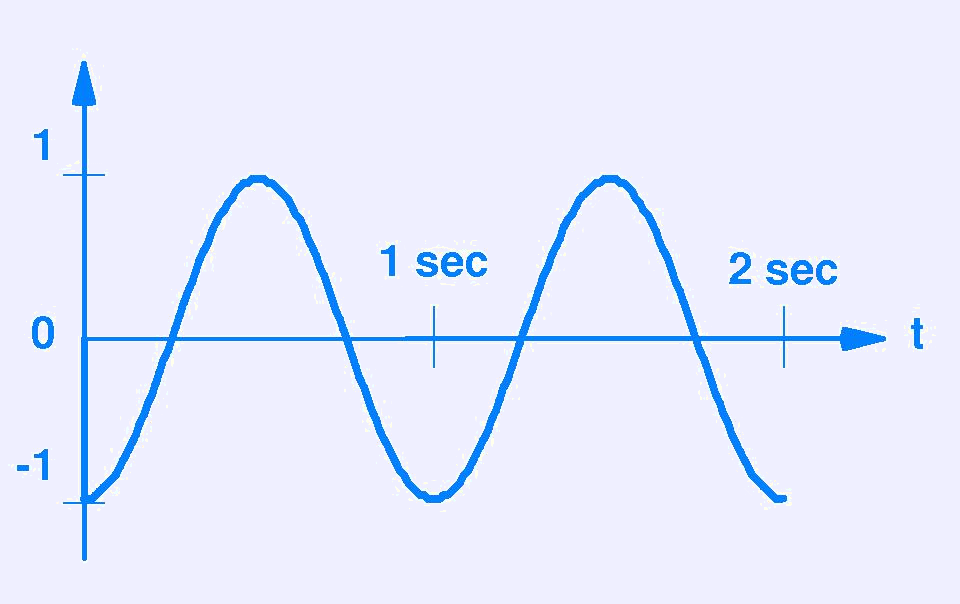 Phase change: sin(2πt+1.5π)
Phase change: sin(2πt+1.5π) - Many natural phenomena produce sinusoidal signals.
- Sine waves tend to survive transmission better than digital signals.
- A very important kind of periodic signal described by the
sine function.
- Combining sine waves.
- Sine waves may be combined to form more complex signals.
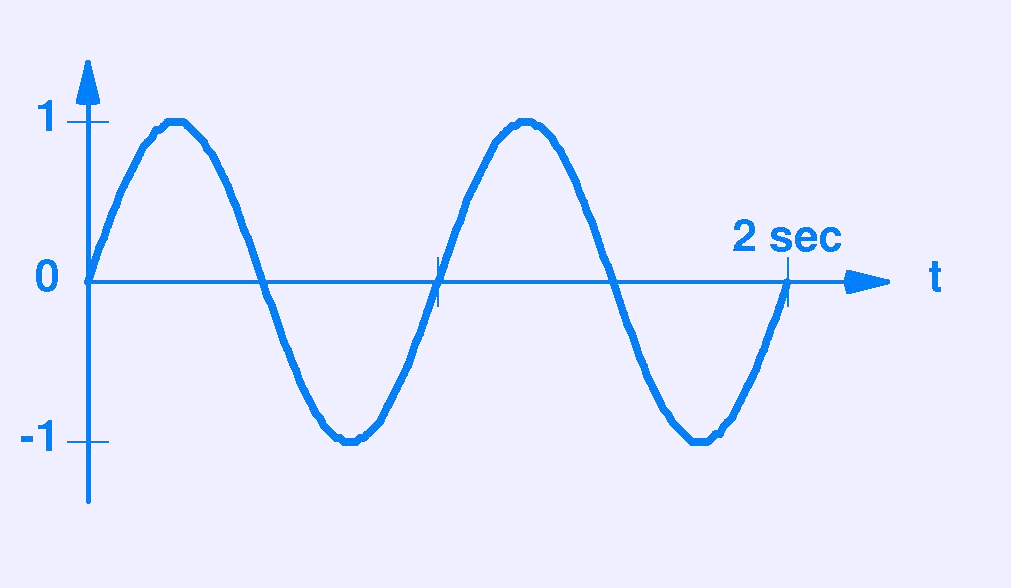 sin(2πt)
sin(2πt)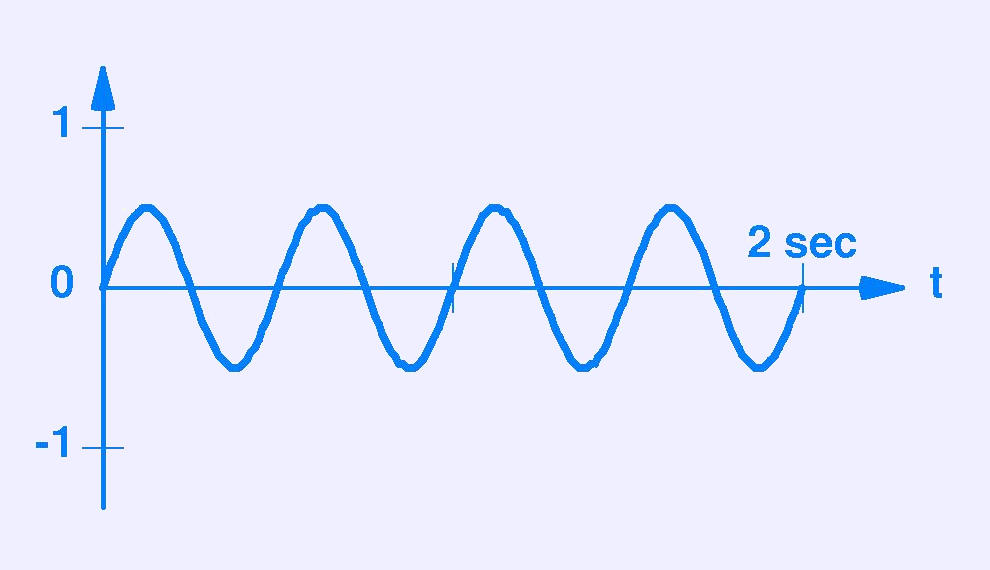 0.5sin(2π2t)
0.5sin(2π2t)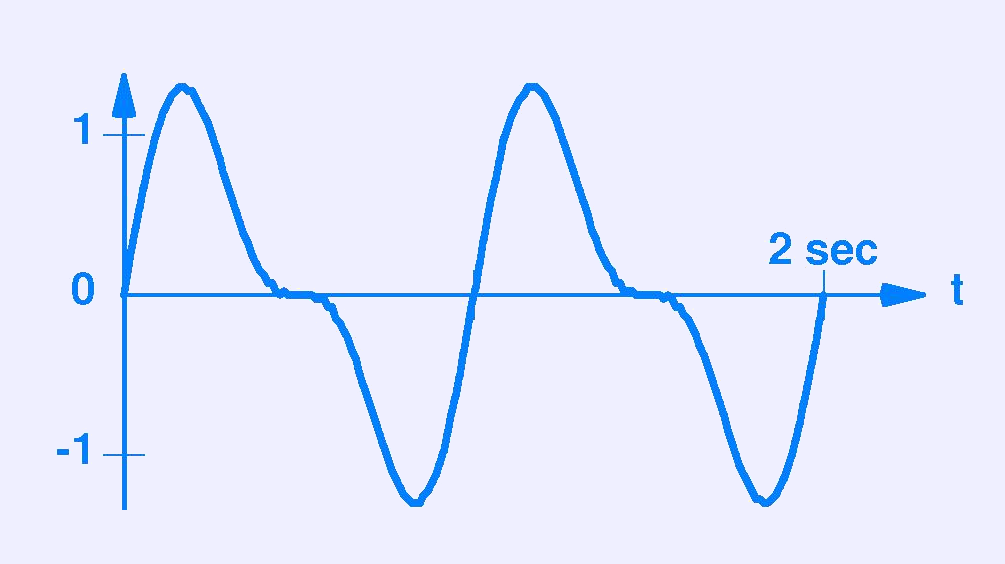 sin(2πt)+0.5sin(2π2t)
sin(2πt)+0.5sin(2π2t) - Fourier discovered how to decompose any signal into a sum of sine waves.
- The curves above represent the signal in the “time domain,” as a function from time to signal strength (voltage, etc.)
- They can also be represented in the “frequency domain,” as a
function from frequency to amplitude. The sum from above is:
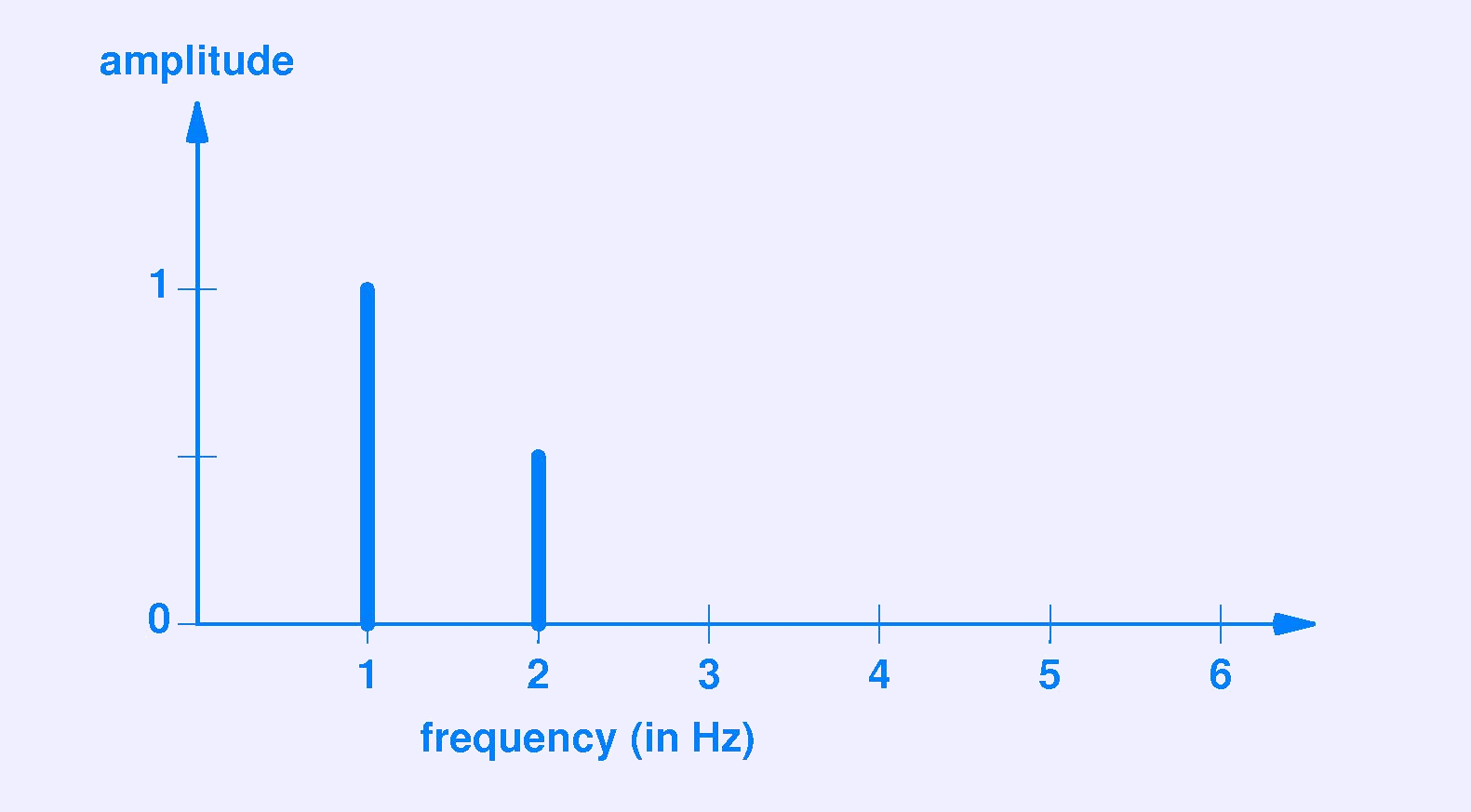
- The Fourier transform is essentially a function from one
function to another.
- By convention, f is the time-domain function, and F is the frequency-domain.
- Notation: ℱ{f(t)}=F(s) ℱ−1{F(s)}=f(t)
- The transform is 1:1, so any signal has essentially two forms.
- The bandwidth of an analog signal is the range of frequencies
present.
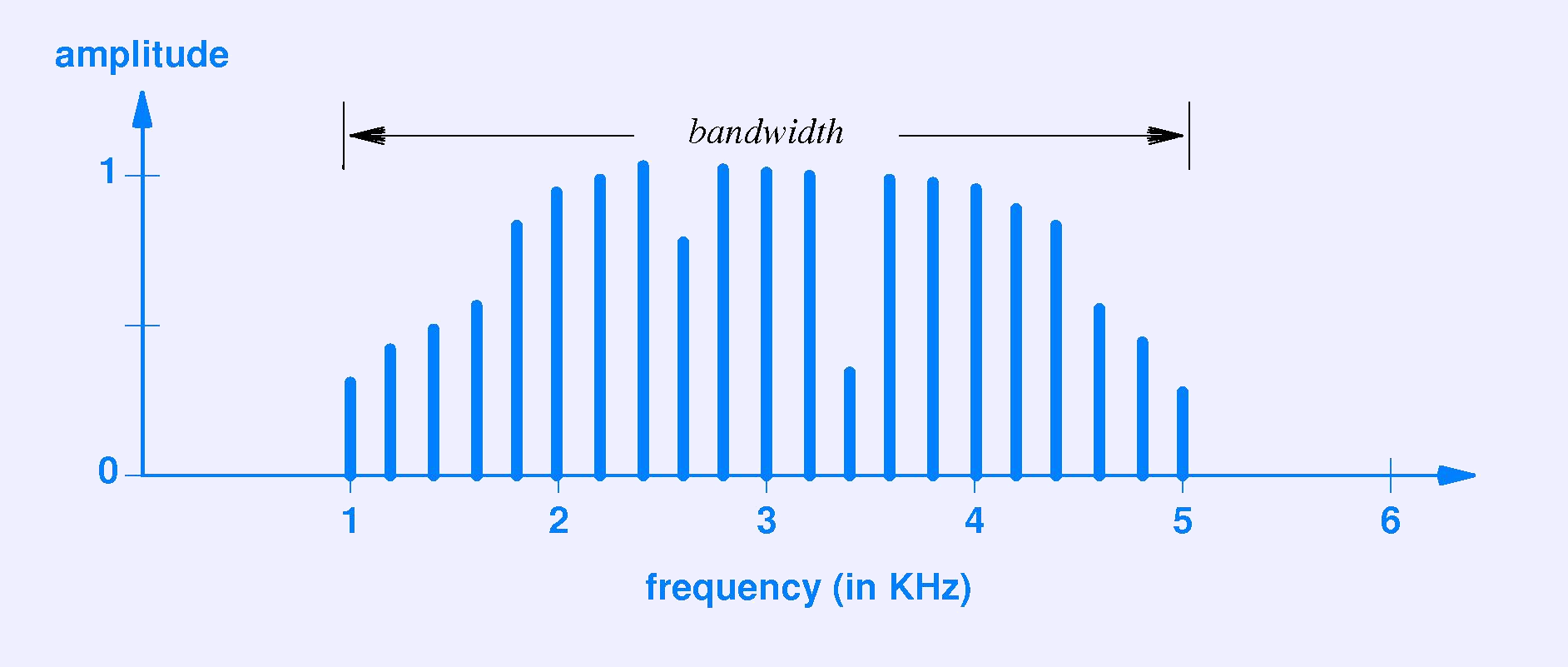
- Sine waves may be combined to form more complex signals.
- Sending digital data.
- You can data faster by using more levels.
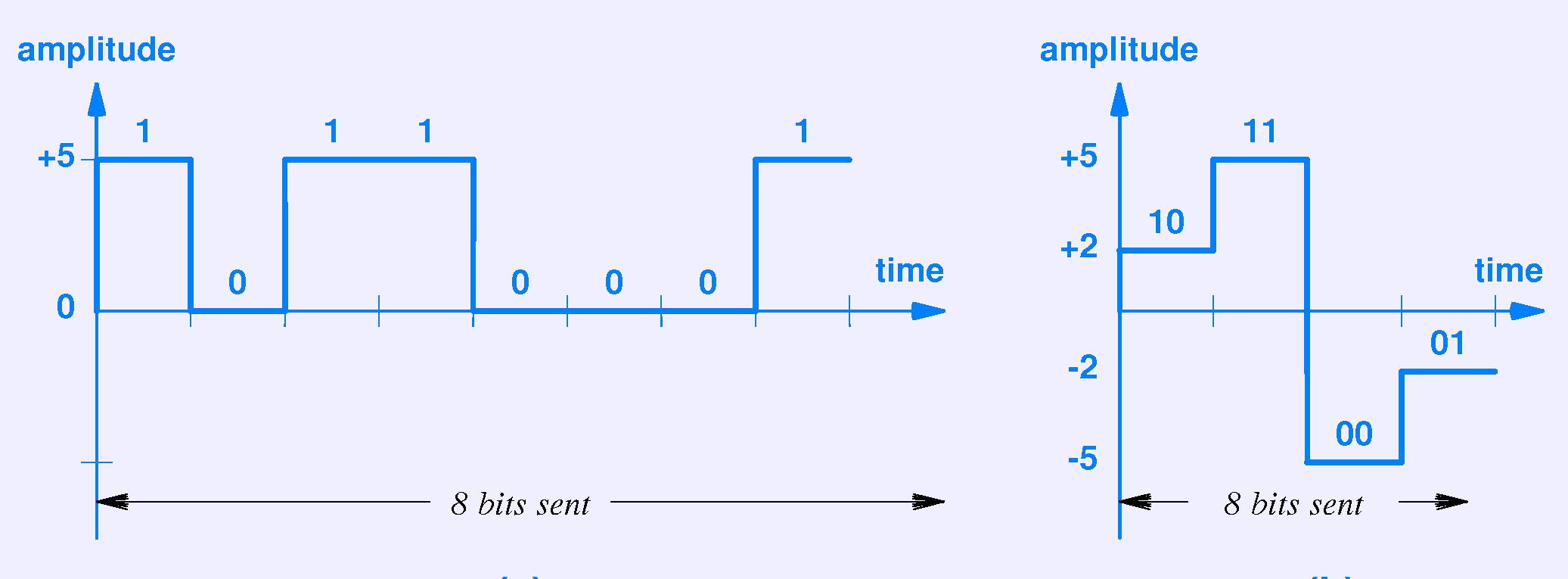
- Using n levels, you can send log2n bits at a time.
- Why can't we just use 10000 levels and just rush it through?
- Must be far enough apart for the receiver to tell which.
- In practice, you can only have a few levels.
- You can send data faster by holding each symbol a shorter time.
- So why can't we just hold each one for a ns and rush it through?
- Must stay long enough for the receiver to notice.
- The maximum rate at which the changes can be detected is called the baud rate.
- For n levels over a digital channel with baud rate b, the
data rate d, in bits per second is:
d=b⌊log2n⌋
- Of course, the endpoints must agree on the number and assignment of levels, bit time, and many other details.
- You can data faster by using more levels.
- Line Coding. How to represent the bits in the signal.
- Common to assign bits to changes rather than levels. Faster to detect.
- Manchester encoding.
- Bits are recognized in the middle of a bit period.
- Upward transition is 1
- Downward transition is a 0.
- To send repeats, an extra transition is performed to get ready.

- Differential Manchester
- Bits are still recognized in the middle of a bit period.
- A transition in the opposite direction from the last is a 1.
- A transition in the same direction from the last is a 0.
- Extras are needed to send zeros.

- NRZ-I. The signal changes for one bits and stays the same for zero.
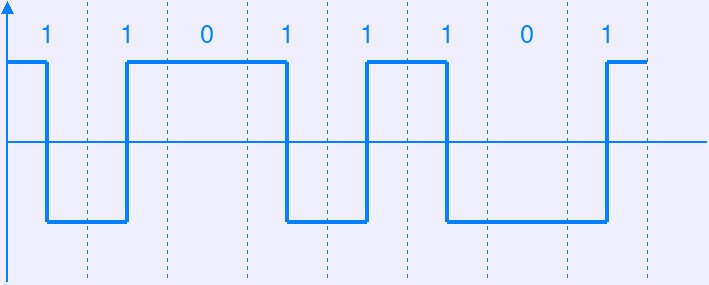
- Changes tell the receiver when the sender thinks bit periods start and end. NRZ-I needs some extra synchronization mechanism if it must send a long run of zeros.
- Digitizing analog sources.
- Periodically sample (measure) the value of the analog signal.
Result is a series of measurements.
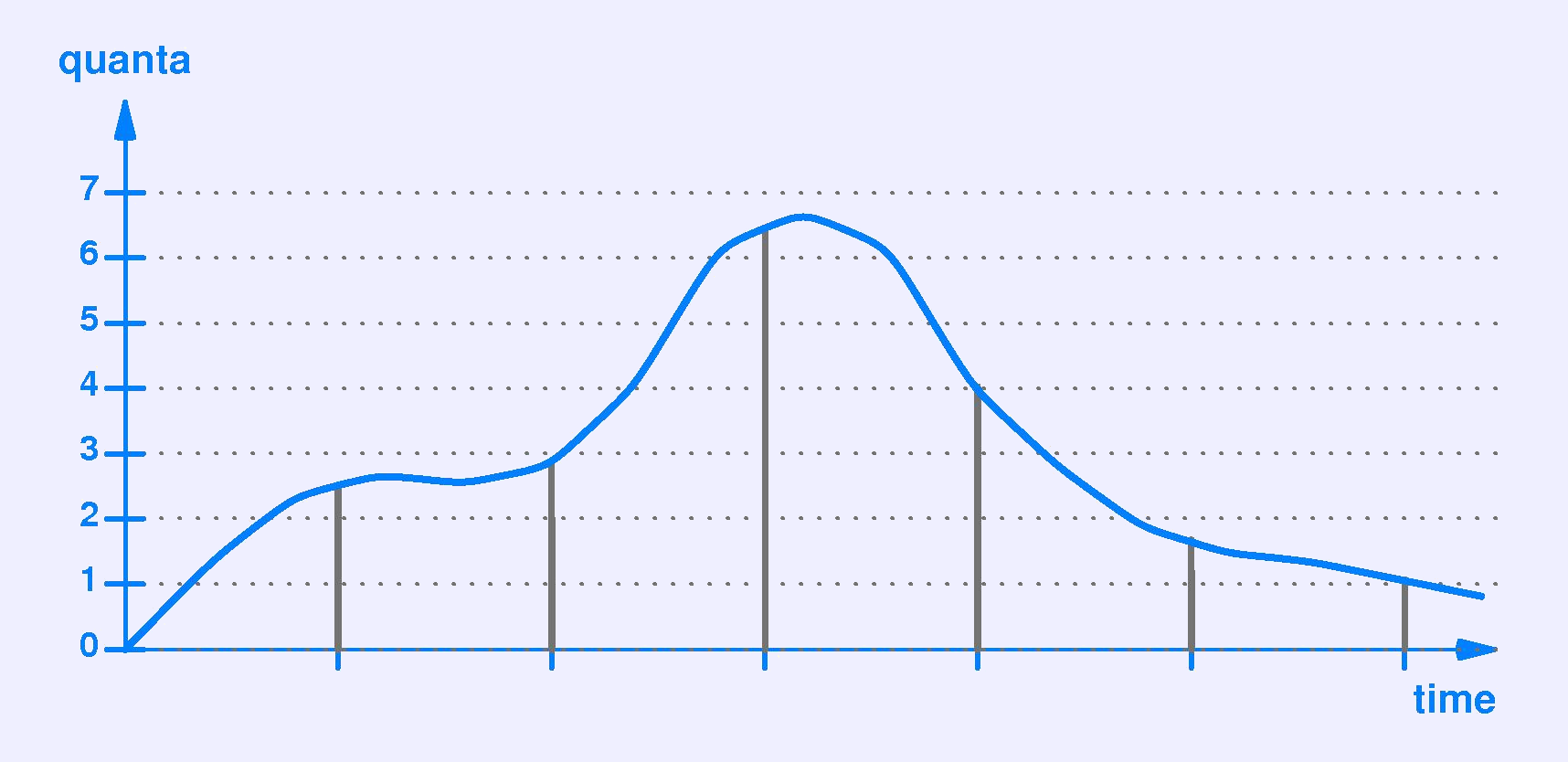
- Sometimes take multiple measurements (three say), and report the mean of each. Reduces transient distortions.
- “Pulse-Code Modulation”: Report the measurements.
- “Delta Modulation”: Report the first measurement, then differences.
- Differences are smaller, use less space.
- Suffers more from transmission errors.
- Sampling
- Larger sample size is more accurate, but generates more data.
- More frequent sampling is more accurate, but generates more data.
- Nyquist Theorem: Sample at twice the highest frequency you
wish to retain: two samples for each wave.
- Follows from the fact that the signal is the sum of sine waves.
- If you have y=Asin(2πft), two points within the same cycle determine f and A.
- Traditional telephone sampling.
- 4000 Hz audio quality.
- 8-bit samples (0-255).
- Voice call: 8000samples/second×8bits/sample=64000bits/second
- CD music: 44100 Hz. Sound a lot better.
- Encoding.
- Linear: Simply record the measurement.
- Non-linear: The numbers are transformed to reduce the range of values so they code more effectively.
- US standard called μ-law; Euro called a-law.
- Compression is also possible, lossless (classical), or lossy.
- Periodically sample (measure) the value of the analog signal.
Result is a series of measurements.